
If you’re looking to boost your productivity, you’ll want to take notes on this article.
The facts don’t lie: note taking helps you remember and manage information. It allows you to stay on top of your work and prevents key details from slipping through the cracks.
The best note taking apps are convenient, versatile, and go above and beyond pen and paper. Here are the 7 best note taking apps available for mobile and desktop.
Why use note taking apps?

There’s a reason taking notes is one of the earliest things you learn in school. It’s a skill for retaining information that’s useful throughout your life.
But why use an app? While some people get by just fine with a classic note taking strategy like pen and paper, digital notes can be kept with your other files and incorporate images, links, and more.
Word processors get the job done. Personally, there was a time when I regularly took notes with Powerpoint. But the best note taking apps often offer additional features for convenience.
Best note taking apps
All the note taking apps on this list are available for both desktop and mobile. You can get started with all of them absolutely free.
1) Microsoft OneNote
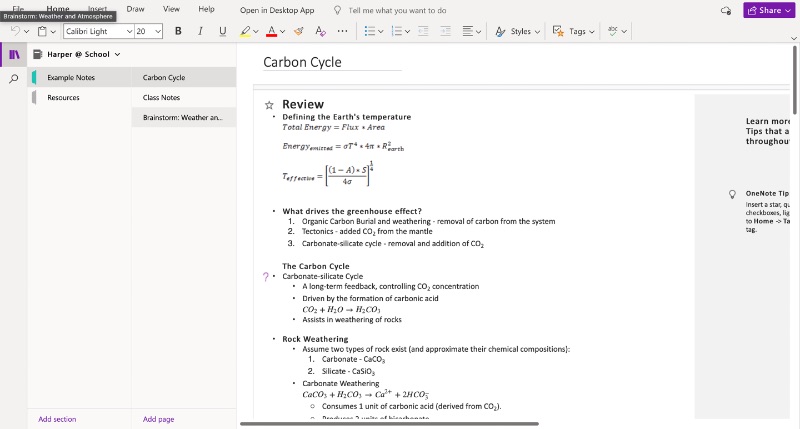
At first glance, OneNote doesn’t seem too different from Microsoft Word. Look closer, however, and you’ll find a few key features that set it apart and make it perfect for note-taking.
First of all, you can organize your files into “notebooks,” allowing you to keep track of different subjects. This nested storage option makes it easy to reference notes on certain subjects from certain days.
It’s also a lot easier to draw, add images, and annotate them in OneNote as opposed to Word. With intuitive design and quick tools, it’s perfect for getting down information in a hurry.
Pricing: Unlike most MS Office apps, OneNote is completely free.
[in_content_ads gallery=”logos” logo=”on” title=”Need graphic design help?” subtitle=”Try Penji’s Unlimited Graphic Design and get all your branding, digital, print, and UXUI designs done in one place.” btntext=”Learn More” btnlink=”https://penji.co”]
2) Evernote
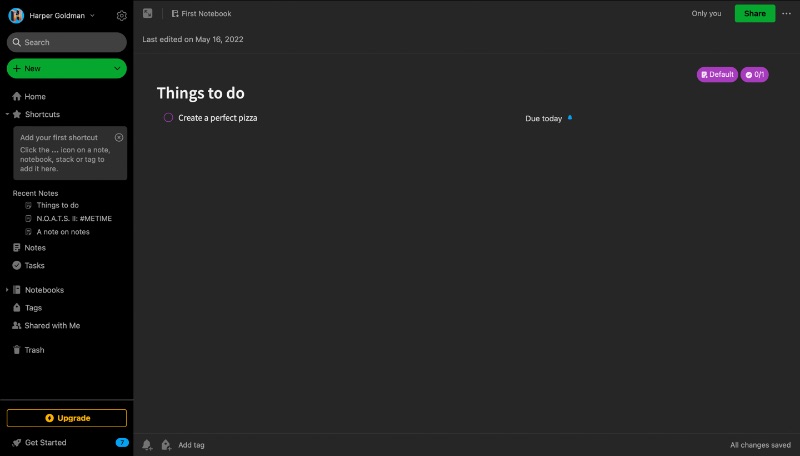
As previously laid out in my Evernote review, Evernote is the best note taking tool for people who want to incorporate notes into their workflow. Where OneNote has tools designed for students, Evernote is made with business in mind.
You can turn your notes into to-do lists, checking off tasks in the Tasks window as you complete them. You can also keep track of your notes with notebooks and tags. On your dashboard, you can find a compilation of all your imported media and a scratch pad for quick reminders.
Pricing: Evernote offers a limited free plan. Paid plans (Personal and Professional) come with additional features and storage. The Personal plan starts at $5.83/mo, while the Professional plan starts at $8.33/mo.
3) Google Keep
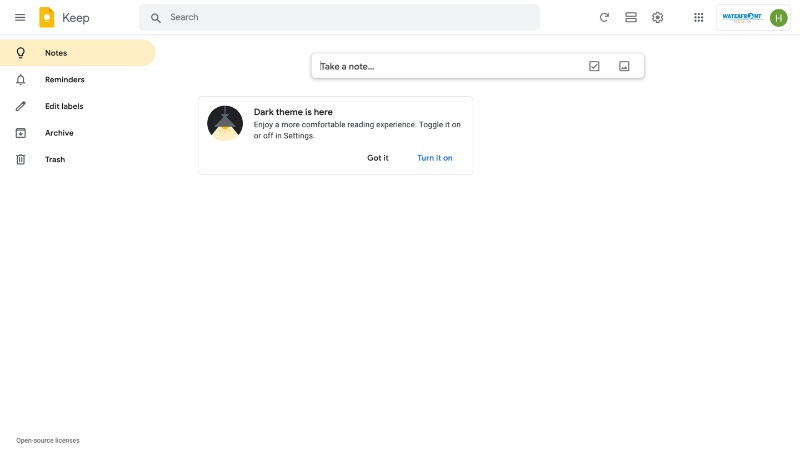
Like Google Docs, Google Keep gets away with a relatively-basic note taking app through one key advantage: native integration with Google Drive.
While Keep’s note options are a bit limited, it presents your notes in a sleek feed that’s easy to navigate. You can add notes and images with the push of a button, easily color-coordinate your notes, and add tags to organize them, as well as set reminders. One unique feature of Google Keep is the ability to instantly turn your notes into Google Docs.
Pricing: Free. Available as an iOS, Android, or web app.
4) Notion
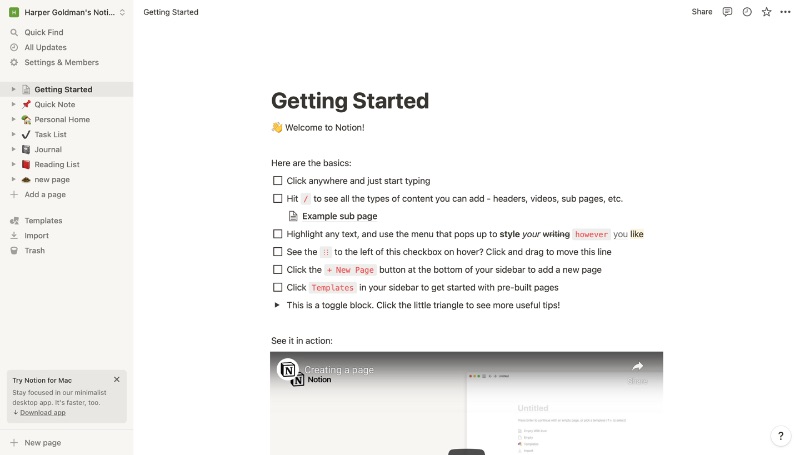
Where some of the best note taking apps create virtual versions of physical notes, Notion is a bit different. Designed for workplace teams, Notion is one of several services (e.g. Bit.ai, Nifty, Slite) that lets you manage your whole workflow in written form.
While it’s not explicitly intended for taking notes, Notion’s additional features make it one of the most robust note taking apps on the market. It allows you to create homepages, checklists, reading lists, journals, or any other kind of document your heart desires.
Notion isn’t as intuitive as some of the other apps on this list. You may want to take a session to learn the slash commands and other functions of the system. Once you have the hang of it, though, it can automate your entire daily process. They even have templates for docs ranging from meeting notes to travel planners.
Pricing: Notion offers a free version for personal use. They also have a Personal Pro plan starting at $4/mo and team plans starting at $8/mo per user.
5) Obsidian
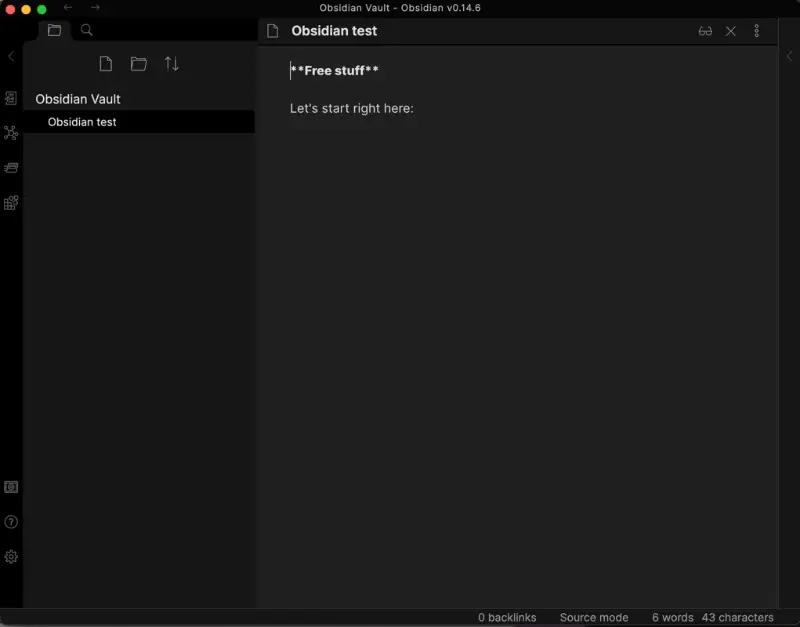
If you thought Notion was in-depth, you may want to skip Obsidian. This powerful command-based knowledge base lets you create and connect plain text files. It’s a true sandbox with over 500 community plugins available. You can even organize your notes as a mind map.
The trade-off is that, while Obsidian can do just about anything, you can’t just sign up and start typing. Its system of vaults, links, and commands may be off-putting to newcomers. Those excited by the prospect of detailed mind maps may be disappointed by the in-depth process required to make them.
Obsidian may not be the most welcoming for newcomers, but tech-savvy users may find it one of the best note taking apps around.
Pricing: Free for personal use, no signup required. Catalyst tier ($25+ one-time payment) includes exclusive access to unreleased builds and dev support. Commercial tier ($50/year per user) available for commercial customers.
6) Zoho Notebook

Like OneNote, Zoho’s Notebook is a free note-taking app offered as part of a slew of office tools. On top of an alternative to MS Office, Zoho offers a CRM, social media management, customer service, accounting, app development, email, video conferences, and more.
I can’t speak to the quality of Zoho’s entire diner-menu of products, but Notebook is a solid, middle-of-the-road notes app. It has familiar features like notebooks, highlights, reminders, sharing, image attachments, and drawing.
If anything, I might complain that there’s not much Zoho Notebook offers that sets it apart from other note taking apps. Its biggest advantage is its mobile app, which has a stellar, convenient design and more features than many of its competitors. If you need an on-the-go app, Zoho Notebook is the note taking software for you.
They also offer a Web Clipper browser extension that lets you take sections of web pages and attach them to your notes. Many note taking apps, including Evernote, Notion, and OneNote, offer similar features.
Pricing: Zoho Notebook is free.
7) Dropbox Paper
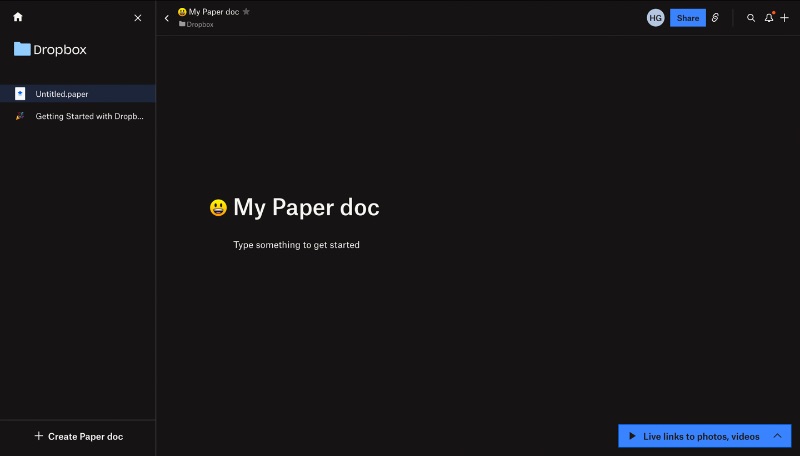
Where Google Keep’s major selling point is its integration with Google Drive, Paper offers direct connection to another major cloud service: Dropbox.
Hosting over 550 billion pieces of content, Dropbox is trusted by users and businesses all over the world. If you’re taking notes for work, direct connection to Dropbox is an attractive feature in its own right.
Beyond that, Dropbox Paper has intuitive and functional features that put it head and shoulders above other note taking apps. You can collaborate with peers for brainstorm sessions at the push of a button. There’s a timeline feature that allows you to create and edit timelines ranging from a week to a year instantly. It also easily toggles to presentation mode, allowing you to share your document with peers.
All told, Dropbox Paper is one of the best note taking apps for teams. It’s intuitive to get started with, but it also has a range of advanced features for pro users. If Dropbox is part of your work environment, Paper is a must-have.
Pricing: Dropbox Paper is free. A free Dropbox account stores up to 2GB of content.
More great note taking apps
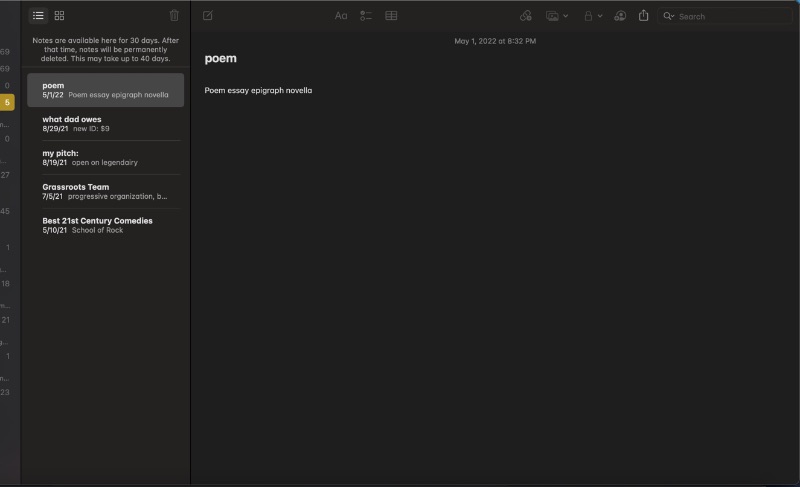
While the seven options above are some of the best note taking apps out there, there’s plenty more to consider.
- Simplenote offers a clean design and great integration.
- Standard Notes is end-to-end encrypted.
- Joplin is open source, encrypted, and offers access to its own cloud service.
Apple Notes, pictured above, is a simple but effective option available for free on Apple devices. Bear and Ulysses are two other great options only available for Mac.
All told, there’s a great note taking app out there for anyone. Find what works for you and consider these other great tools to boost productivity.














